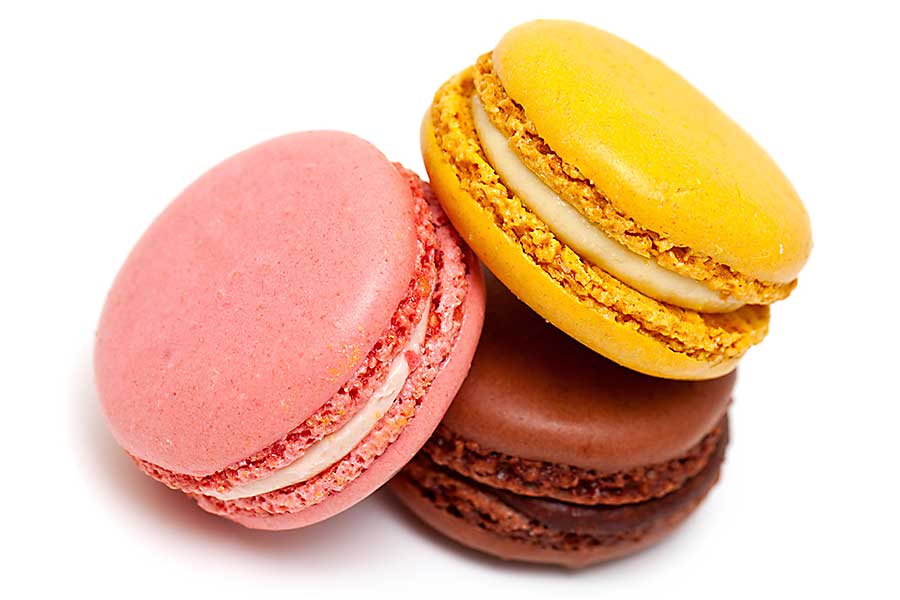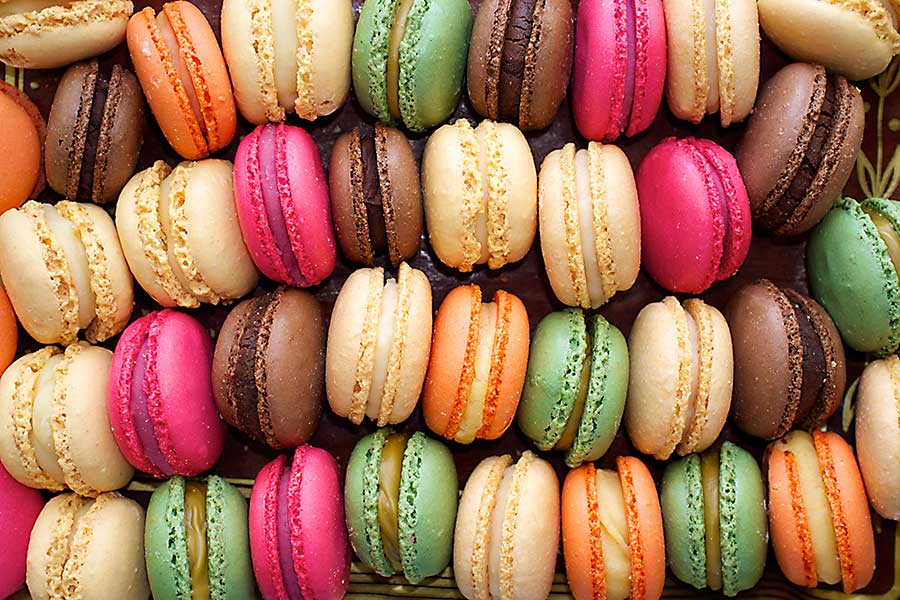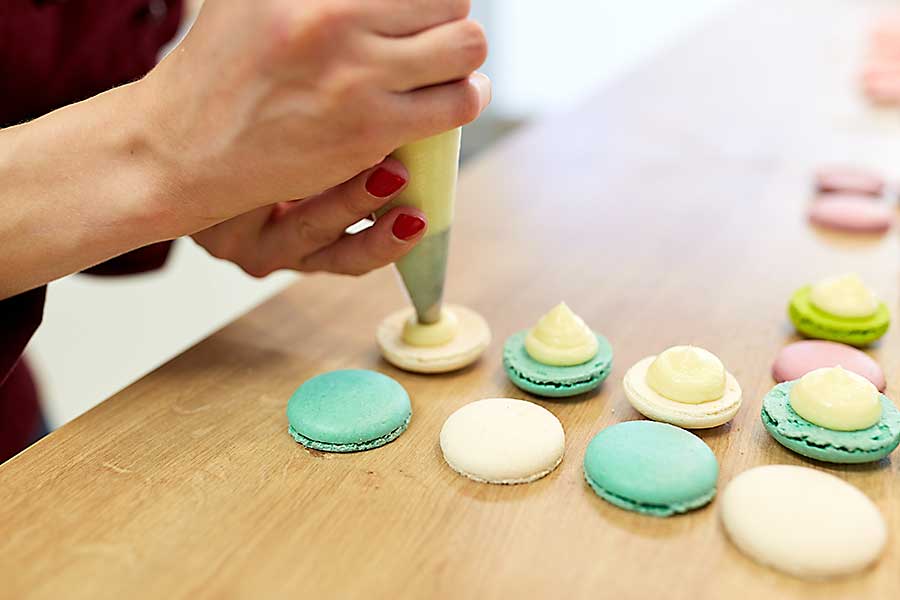Macaron
Macarons are a type of French dessert that resemble a small round cookie, with a crispy crust and soft interior. Similar to a meringue, macarons are typically made from egg whites, icing sugar, granulated sugar, almond meal, and different food colourings. Parisian-style macarons – the type most commonly eaten around the world.- often feature a ganache, buttercream, or jam filling sandwiched between the two meringue-like cookies. This likens macarons to a type of sandwich cookie that melts in your mouth.
Macarons are available in various different flavours, depending on the creativity and taste of the baker. Some examples include coffee, strawberry, vanilla, chocolate, almond, pistachio, and more. They have dramatically increased in popularity since 2010, appearing all over the world in different flavours and variations. The French bakery, Ladurée, has been world-renowned for its macarons for more than 150 years.
Macarons are sometimes spelled as ‘macaroon’, lending some confusion between this sweet French confection and the popular coconut macaroons.
History of the macaron
While widely acknowledged as a French dessert, it is said that macarons are Italian in origin. Monasteries in the Italian city of Venice are said to have produced macarons since the 8th century A.D. The dessert found its way to France by way of queen Catherine de Medici, who was of Italian ancestry but married to Henry II of France. When the queen moved to France in 1553, she brought along her Italian pastry chefs, who introduced the macaron to France.
There are some other theories in regards to the evolution of the macaron. For example, French culinary encyclopaedia, Larousse Gastronomique says that macarons originated in 1791, in a convent near Cormery. In 1792, during the French Revolution, it is said that two nuns who sought asylum in Nancy were baking and selling macarons to help pay for their housing. The macarons referred to in these stories were traditional almond macarons, made without flavourings or fillings. The two nuns were later known as the Macaron Sisters.
It wasn’t until the 1930s that macarons began to be sold as sandwiched cookies. They were typically stuffed with jam and flavoured with liqueurs and spices. The popular type of macaron we see today – made from two almond meringue cookies filled with buttercream, ganache, or jam – were then referred to as Gerbet or Paris macarons. The origin of these flavoured and stuffed macarons is disputed. Some credit the French baker, Pierre Desfontaines of luxury French patisserie Ladurée, with having introduced the modern macaron. Others claim the original baker was a man named Claude Gerbet.
Different variations of macarons
There are many different variations and flavourings of macarons in different parts of the world.
- In Amiens, macarons are made from almond paste, fruit, and honey. The recipe for this variation was first published in 1855, as Macarons d’Amiens.
- In Japan, macarons are popularly referred to as makarons. One version uses peanut flour instead of almond meal and a flavouring similar to wagashi.
- In the USA, UK, and Australia, different flavours of macarons have appeared on shelves since their popularity boomed in the last decade. Flavours include peanut butter and jelly, peach champagne, snickers, candy corn, salted pretzels, candy cane, maple bacon, pumpkin, and even salted caramel popcorn.
Private Chefs, Art of Dining
CHEFIN is a private chef platform that’s reimagining social dining.
You can easily connect with 1 of our 250 private chefs and treat your guests to restaurant-quality dining experiences in the comfort of your own home, office or chosen venue. From high-end dining to quirky social food experiences, the CHEFIN platform makes it effortless for you to access gourmet food that’s worthy of a Michelin-starred establishment.
What you get:
-
- Your very own private chef who is vetted and insured,
- A customised menu for your needs,
- 24/7 concierge support,
- Complete post-dinner cleanup,
- A fun, stress-free, and unforgettably dining experience!


